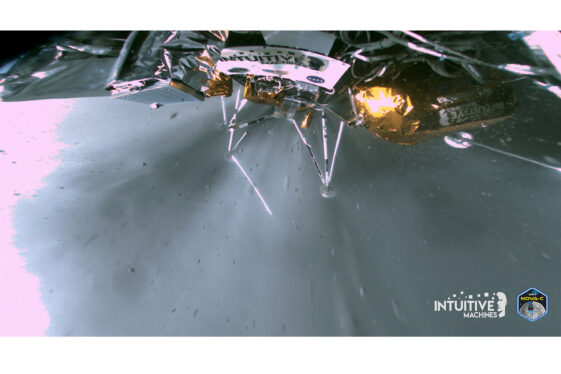Lunar night has come around again, presenting yet another test for the two landers that recently arrived on the moon’s surface. Both Japan’s SLIM spacecraft and Intuitive Machines’ Odysseus have gone to sleep for the two-week-long stretch of darkness, the two teams confirmed at the end of this week. There’s no guarantee that they’ll be able to resume operations afterward, but they’ll try to reestablish contact when the time comes.
While the solar powered landers weren’t built to withstand the frigid lunar night, SLIM — which has been on the moon since January 19 — has already beaten the odds before to pull through last month. It’ll be the first lunar night for Odysseus, which landed on February 22.
On March 1 at 3am JST, the sun set on the Shioli Crater and #SLIM re-entered a period of dormancy. Although the probability of a failure increases with the repeated severe temperature cycles, SLIM operation will attempt to resume when the sun rises (late March). #GoodAfterMoon pic.twitter.com/RHxNX1cmBF
— 小型月着陸実証機SLIM (@SLIM_JAXA) March 2, 2024
The missions, though successful in that the spacecraft survived their respective descents to the surface, stand as further examples of how challenging it is to land on the moon; both landers fell over, leaving them stuck in non-ideal positions. SLIM face-planted, and Odysseus broke a leg and tipped onto its side.
SLIM has been able to capture a few images from the surface, and the team shared another look at the Shioli crater from its perspective on Thursday before it powered down. Odysseus has sent home some pictures too from its wide-angle camera, including one last transmission before lunar night that shows a portion of the lander and the surface of the moon, with a tiny crescent Earth in the distance. But the world has eagerly been awaiting third-person POV pictures from the EagleCam made by students at Embry-Riddle Aeronautical University, which hitched a ride with Odysseus. Unfortunately, that doesn’t seem likely to happen at this point.
Before its power was depleted, Odysseus completed a fitting farewell transmission. Received today, this image from February 22nd showcases the crescent Earth in the backdrop, a subtle reminder of humanity’s presence in the universe.
Goodnight, Odie. We hope to hear from you… pic.twitter.com/RwOWsH1TSz
— Intuitive Machines (@Int_Machines) February 29, 2024
The camera wasn’t deployed as originally planned before the moment of touchdown, and while Intuitive Machines said this week that the team was able to power it up and eject it after Odysseus reached the surface, communications with the camera so far aren’t working. “The Embry‑Riddle team is working on that and wrestling with that to see if there’s anything they can do,” Intuitive Machines CEO Steve Altemus said on Wednesday. The onset of lunar night isn’t going to help those odds.
This article originally appeared on Engadget at https://www.engadget.com/two-toppled-moon-landers-go-dormant-for-a-lunar-night-they-may-not-survive-182451657.html?src=rss


